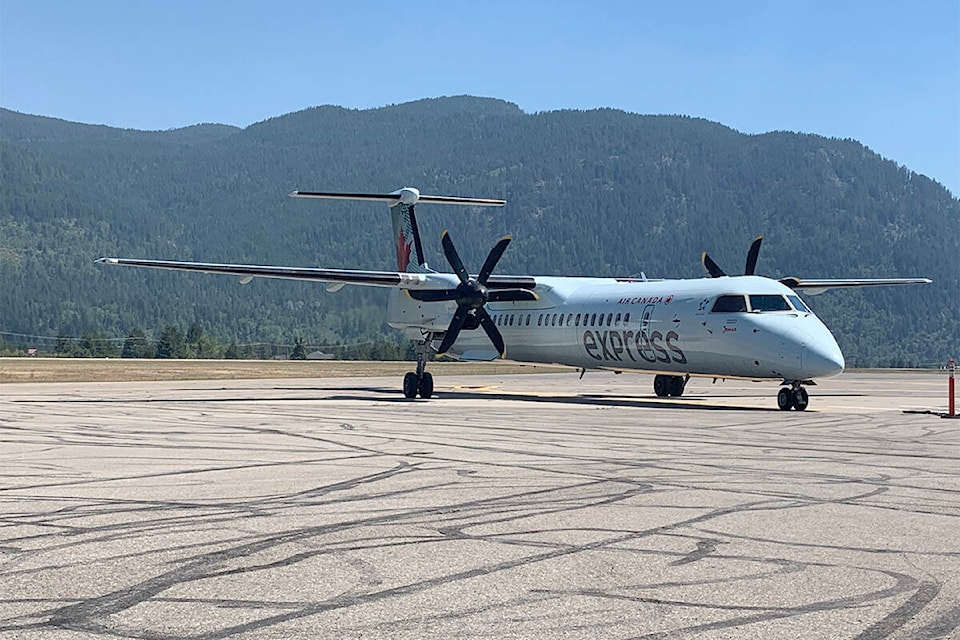The City of Castlegar has taken a big leap forward towards increasing reliability at the West Kootenay Regional Airport.
Required Navigation Performance (RNP) plans for the airport have been submitted to regulators including Nav Canada.
Castlegar CAO Chris Barlow says year-round reliability at the airport has been a priority for the city for years and a lot work has been going on in the background for the last few years.
“Through that work we have identified, for certain, that the RNP is the best solution for the WKRA,” said Barlow at the Dec. 6 Castlegar city council meeting.
RNP is a set of navigation specifications that use GPS along a precise flight path to create a high level of accuracy and integrity, which offers significant safety benefits over traditional approaches.
The city says it will allow aircraft to follow a guided approach into the valley, far below the minimum levels that are currently used, allowing aircraft to get lower and closer to the airport before deciding if they can land.
“It will certainly help us in the winter months with the fog in the valley,” said Barlow.
The idea of an RNP approach for WKRA was first introduced in a 2017 study by Jeppesen Aviation. The study concluded the procedures were possible; however, regulatory exemptions would be needed.
PREVIOUS: Proposed Castlegar airport RNP upgrade could increase reliability
At the time, staff took that knowledge and met with Nav Canada, Transport Canada, WestJet and Air Canada to understand the next steps in getting an RNP adopted at WKRA and an air carrier flying the procedure.
Staff prepared a report in 2019 that laid out the next steps for making that happen and continued to work on the solution.
Barlow says that the city eventually learned that they didn’t have to wait for Nav Can and regulatory authorities to do the work. Rather, the airport could hire experts and do the work themselves.
They city has commissioned advanced performance navigation company GE/Naverus Inc. to provide the services.
Over the past year, survey and design work has been completed and approach and departure processes for WKRA have been created and flown in simulators.
The company has also provided co-ordination and direction with stakeholders at Nav Canada and Transport Canada.
Barlow says the city expects regulatory approvals will be granted in 2022 and that they will be ready for an airline to use in 2023.
To fund the work the city will be borrowing $1 million, interest free, from Columbia Basin Trust. The loan will be repaid over 25 years at about $40,000 per year. Payments won’t start for two years and the expense will be recovered from airport passenger fees, not taxation.
Both Barlow and city council are extremely pleased with the funding arrangement.
The CAO also says increasing winter reliability at the airport will have spin off economical benefits for the entire region such as increases winter recreation travel.
RELATED: Nav Canada tower to remain open at West Kootenay Regional Airport
betsy.kline@castlegarnews.com
Like us on Facebook and follow us on Twitter
